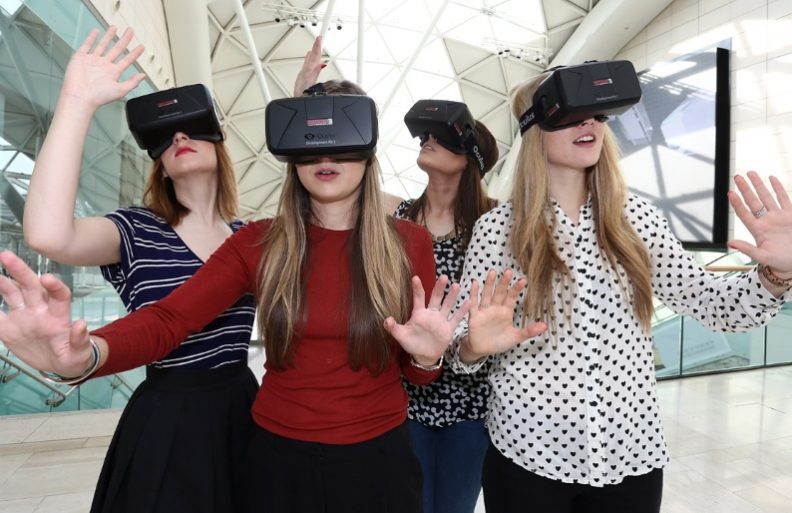There’s no pricing yet for the Vive Pro, but it’s bound to be expensive—the existing version is $600. For consumers uninterested in shelling out that kind of money to experience “presence,” companies including Lenovo and Oculus VR have important news of their own.
Working with Google, Lenovo announced at CES a midrange VR headset called the Mirage Solo that’s expected to be released in the second quarter of this year. No price has been announced, but the company indicated it would cost less than $400. Besides the reasonable price (by VR standards), the Mirage Solo could also be attractive to consumers because it’s entirely self-contained. A built-in Qualcomm Snapdragon 835 processor means there’s no need to plug the headset into a PC or slide your smartphone into a visor.
Along with better displays, that’s the other promising VR trend that’s emerged at CES this year: Hardware makers are trying to minimize the inconveniences that stand between consumers and believable virtual worlds.
Oculus is also trying to make VR more approachable with the coming Oculus Go. Its attractive price—starting at $199—could entice consumers who aren’t comfortable shelling out as much as it costs to buy a laptop. And, like the Mirage Solo, this is a self-contained VR headset that does away with the need for a PC, smartphone, or dedicated gaming console. That should be appealing if being corralled by a bunch of wires isn’t your idea of a good time.
“For gamers, these issues [of convenience] might not matter as much, but for others it must be more intuitive,” says Nicola Ranieri, a co-founder of SensoryX, which has developed a pair of gloves to replace the motion-sensing touch controllers found on the Vive and Oculus Rift. During a demo, I found that they accurately translated my hand movements; think trigger pulls at a virtual shooting range.
VR content is become more varied, too, with a strong focus on expanding beyond traditional gaming to areas like health and fitness. “Unless you’re a masochist, who likes to go to the gym?” says Preston Lewis, a co-founder of Black Box, a VR fitness company. “People are literally leveling up their character [playing video games] instead of leveling up their lives.”
Floyd Mayweather, the recently retired boxing champion, was in Las Vegas showing off a coming VR fitness app for the HTC Vive that puts users inside a virtual gym to fight a digital Mayweather. Virtual pugilism burns as much as 300 calories in a 20-minute session, according to Mayweather Boxing + Fitness.
I can’t say whether or not I actually burned 300 calories using the app, but I certainly built up a bit of a sweat as I ducked and weaved in a virtual bout against a facsimile of the fighter. (I lost, by the way.)
“Everyone wants to work out,” Mayweather said at a small press conference not far from the arena where he beat Conor McGregor in his last professional fight last August. “Everyone wants to be in shape. If you feel good you look good. If you look good you feel good.”
Maybe even if you’re wearing a VR headset.

